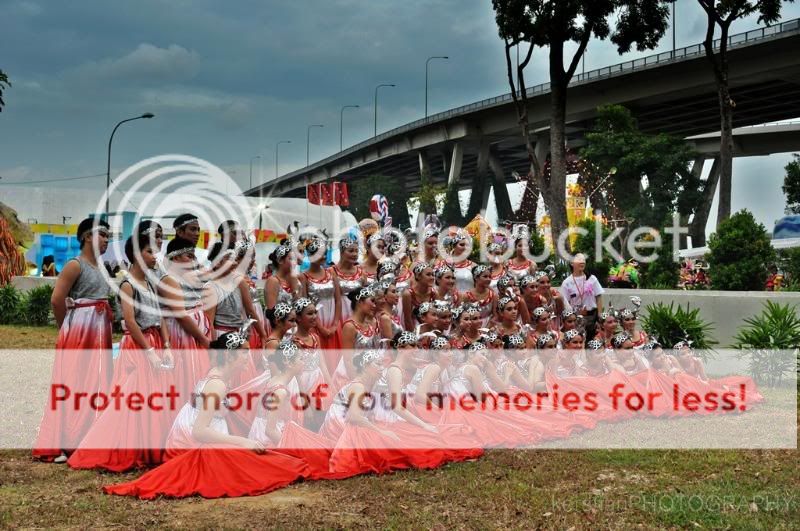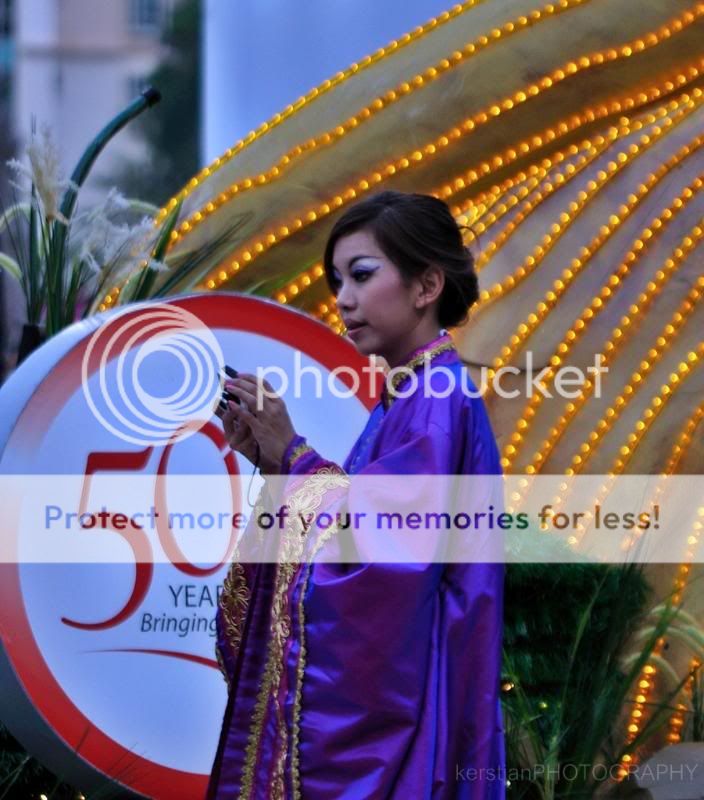The Chingay Parade (Chinese: 妆艺大游行; pinyin: Zhuāngyì Dàyóuxíng) is an annual street parade held in Singapore as part of Chinese New Year festivities. The term Chingay itself originated in Southeast Asia, particularly in Penang, Malaysia, which is a phonetic equivalent of the Chinese words "妆艺", which means "a decorated miniature stage" or float. Today, the parade has evolved into a massive multi-cultural and international event telecast live on television every year.
History
The Chingay Parade traces its origins to a float decorating competition held in Penang in 1905. This practice of float decoration spread to the rest of Malaya by the 1960s, and eventually became associated with the Chinese New Year.
On 4 February 1973, the first Chingay parade was held in Singapore, partly as a result of the ban on firecrackers a year earlier in 1972 as a result of fire hazards. This ban was viewed unfavourably despite the safety issues involved. Some people felt that the ban would result in a much dampened festival mood for the Chinese New Year period. To address this issue, the People's Association and the Singapore National Pugilistic Association jointly organised a street parade from Jalan Besar to Outram Park featuring the signature floats, acrobatic acts, lion and dragon dances, stilt walkers, and the like, to bring back some cheer to the general public.
The largely Chinese parade became a multi-cultural one from 1977 when Malay and Indian groups started joining in the performances, which was to mark a major precedent in the overall flavour of the parade into one which has become largely multi-cultural in character, despite the continued presence of traditional Chinese acts such as lion dances and stilt walkers till this day.
In 1985, the parade marched down Orchard Road for the first time, a move which was to prevail for much of the parade's subsequent history. Although the change could be attributed to the desire of organisers in bringing it closer to tourists along the major tourist belt and for ease of organisation on a relatively long and straight stretch of road, it also further signified the increasingly desinicized character of the parade. This is further evidenced when in 1987, an international flavour was added to the parade when a group from Japan participated for the first time with their float sponsored by The Straits Times.
The Chingay Parade became an evening-to-night parade in 1990, changing the overall feel of the parade towards one in which lights and pyrotechnics dominate. In 2000, the parade was shifted out of Orchard Road to the Civic District centering at City Hall, an area steep in Singaporean history and culture. Construction works at the City Hall area resulted in the parade marching through the streets of the Chinatown district for the first time. Faced with limited space for spectator stands and a much more complicated and winding route in these locations, however, the parade moved back to Orchard Road in 2004 along with an effort to introduce audience participation and involvement in the traditionally passive parade. Firecrackers were let off for the first time in the parade that year. Despite the authorities allowing the firecrackers to be let off under some safety procedures, it was decided that the Chingay be preserved. In 2008, the parade was once again held at City Hall, with the route lasting from the City Hall building to The Esplanade. For the 2009 parade, it was centralised around Parliament House with the performers going around the Padang and also featured a magical Grand Finale (MAGICBOX@Chingay 2009). That year was the also the first year that the telecast on television was delayed by one day.
Post-parade street parties have been held for the 2004, 2005, 2006, 2008 and 2009 editions of the parade.
My coverage will follow soon ....
Results 1 to 10 of 39
Thread: Chingay 2010
-
02-22-2010, 05:10 PM #1
 Chingay 2010
Chingay 2010
-
02-23-2010, 07:42 AM #2
The parade will start at 8pm nya mga 5:30 didto nako... hehe, pwerte sayoha ra. Wala koy lingaw, roam around lang sa nya kuha ug mga snapshots.
#1
The Singapore Mascot andam na

#2
some of the Floats


#3

#4
in case of emergency, andam nasad para gukod ... hehe

#5
Abot na sila

#6
Tsika-tsika sa

#7
Group hug

#8
Smile

Some faces
#9

#10

#11

#12

#13

#14
Wala ka antos, pwerte gyud dukaa ... hehe

-
02-23-2010, 01:21 PM #3
-
02-23-2010, 05:01 PM #4
-
02-23-2010, 05:36 PM #5
-
02-23-2010, 05:39 PM #6
nice!!!!!!!!!!!!!!!!!!!!!!! =)
-
02-23-2010, 05:50 PM #7
-
02-23-2010, 05:51 PM #8
-
02-24-2010, 03:10 AM #9
-
02-24-2010, 08:38 AM #10
nice set bai! maau pa dha kay dghan events na pwede ma.cover...

Advertisement
Similar Threads |
|





 Reply With Quote
Reply With Quote










